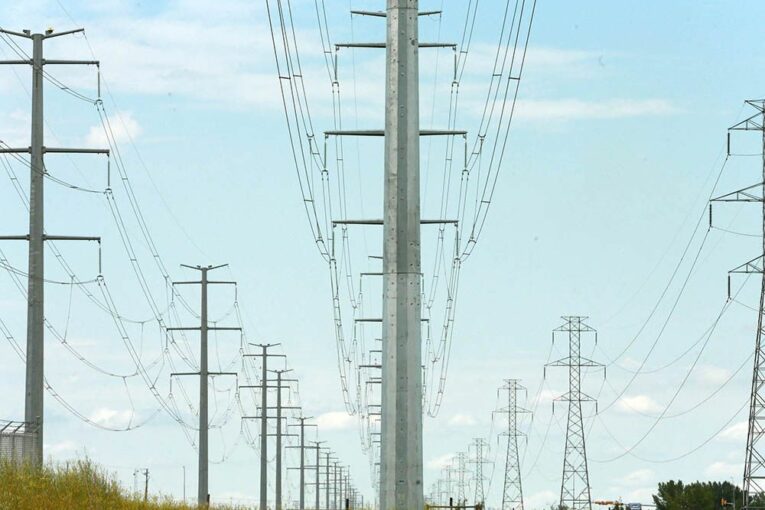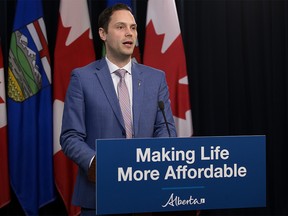
About 120,000 southern Alberta households are about to receive a jolt to their electricity bill.
The province’s 13.5-cent per kWh cap on the electricity rate for those on a Regulated Rate Option plan ends Friday.
What many consumers may not be aware of is the program — announced as part of Alberta’s Affordability Action plan — is a deferral program, and a $200-million bill is about to become due and payable over the next 21 months.
Joel MacDonald, owner of energyrates.ca, an Alberta utility consumer advocacy group, said it’s not just consumers who may have seen it as just a cap and not a deferral program.
“That’s how we thought it took place as well,” he said. “And then when we dug into the details, we were very surprised to see the way that it was structured.”
The province loaned utility companies the funds to cover the potential gap over the high-demand winter months. The cap was in place for the past three months when rates for Enmax customers hit 29.112 cents in January, 29.677 cents in February and 18.681 cents in March. The rate in March 2022 was 10.58 cents.
The electricity rate for RRO Enmax customers has been above 13.5 cents since July 2022, including 22.133 cents in December, before the cap was installed.
Repayment will take place from April until December 2024. For Enmax RRO customers, the total works out to about $200 each.
Affordability Minister Matt Jones said in an email statement that the province has given a 21-month repayment period to ensure electricity costs remain stable and affordable for Albertans. He also pointed to an additional $200 in electricity rebates, including $75 in January and February, and $25 in March and April, for a total of $500 for each residential electricity customer since last July.
“The government continues to monitor and review the RRO and our electricity system as part of our work to keep reliable electricity affordable for Albertans,” Jones said in the statement.

The repayment of the deferral falls squarely on those who are enrolled in the RRO plans — a floating market-based rate.
It is still possible to switch from the variable rate to a competitive fixed rate without penalty, but not everyone is eligible based on their credit score or being able to cover a deposit.
This means a shrinking pool of people with the fewest resources could shoulder the brunt of repayment. The most recent report out of the Market Surveillance Administrator from Jan. 6 showed 119,601 RRO customers for Enmax in September, representing 23.6 per cent of Enmax residential customers.
According to a report Thursday morning from the University of Calgary’s School of Public Policy, about 35 per cent of Alberta homes are on an RRO. Sara Hastings-Simon, an assistant professor at the U of C and director of the Masters of Sustainable Energy Development program and co-author of the report, said about half of those households will not be able to make the transition to a competitive contract.
A statement from Enmax said they have been reaching out to all customers not on a fixed-rate plan since before market rates shot up in 2021, and since then 75 per cent of all customers have shifted to a retail or fixed-rate program.
“ENMAX has a dedicated team of customer care agents actively working one-on-one with customers to find manageable payment options or additional support,” said the statement.
Recommended from Editorial
-

Alberta Budget 2023: No new inflation-fighting measures coming for Alberta consumers
-

‘Half-baked’: NDP says UCP’s electricity rate deferral is no use to consumers
The School of Public Policy report said at current RRO levels, it will mean an additional 2.5 cents/kWh tacked onto the market amount. But if 50 per cent of RRO customers make the switch, the deferral rate would ostensibly increase to five cents.
“The way that the government has set up the program to protect consumers from rising electricity prices really risks leaving low-income Albertans and those that can least afford it on the hook for covering the cost of that program,” said Hastings-Simon. “The structure of the regulated rate is that people can leave, and those that leave won’t pay it back. But those that have low credit or can’t afford a security deposit can’t leave, and so they’re really sort of left behind and left on the hook.”
She said details about such programs are often missed by the public, who often do not realize how much they are even paying for electricity, especially on an RRO plan, until they get their bill.
The report calls on the provincial government to unburden those who cannot afford a deposit to enable everyone to transfer to a fixed-rate deal. It also calls on the province to absorb the cost of the program to avoid having the most vulnerable Albertans having to cover the $200 million.
Twitter: @JoshAldrich03
You can read more of the news on source

